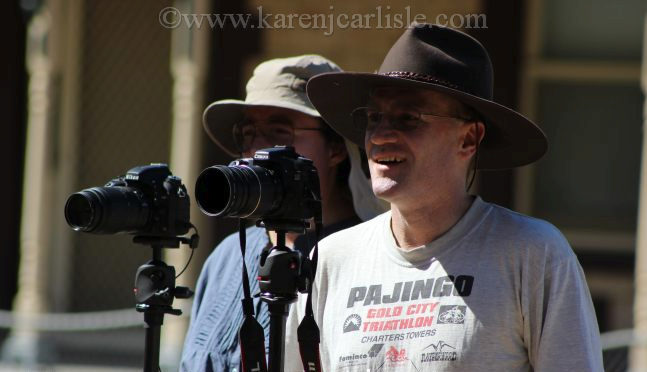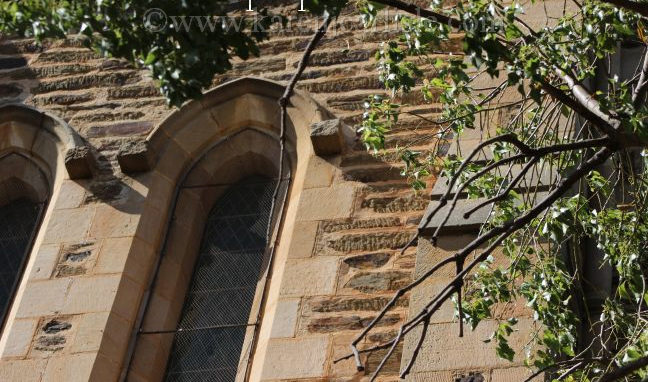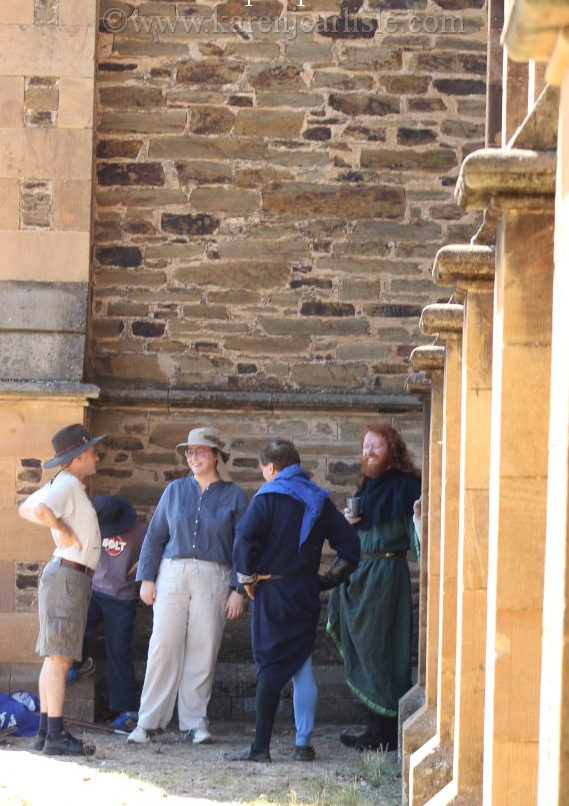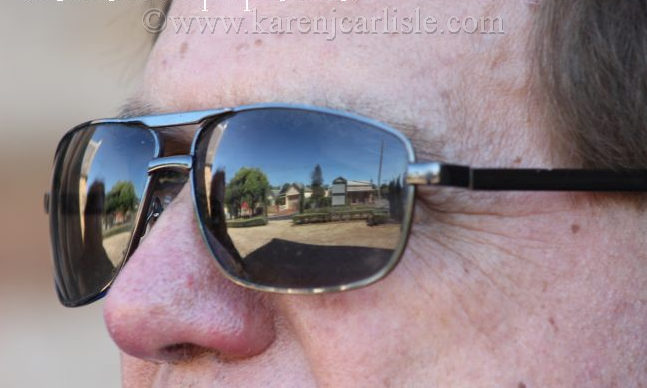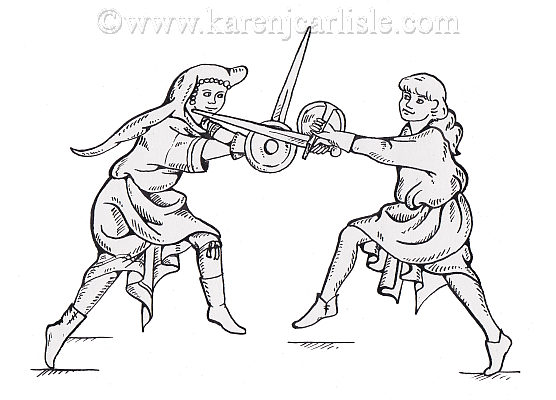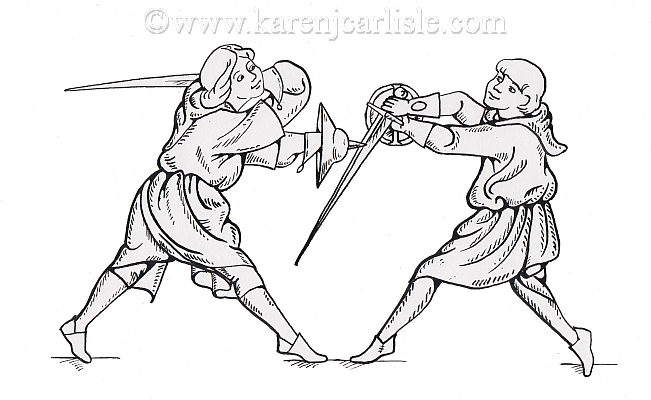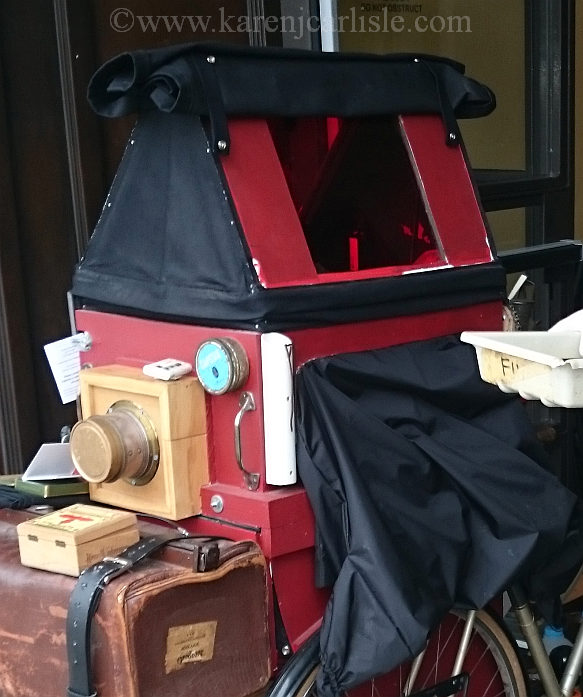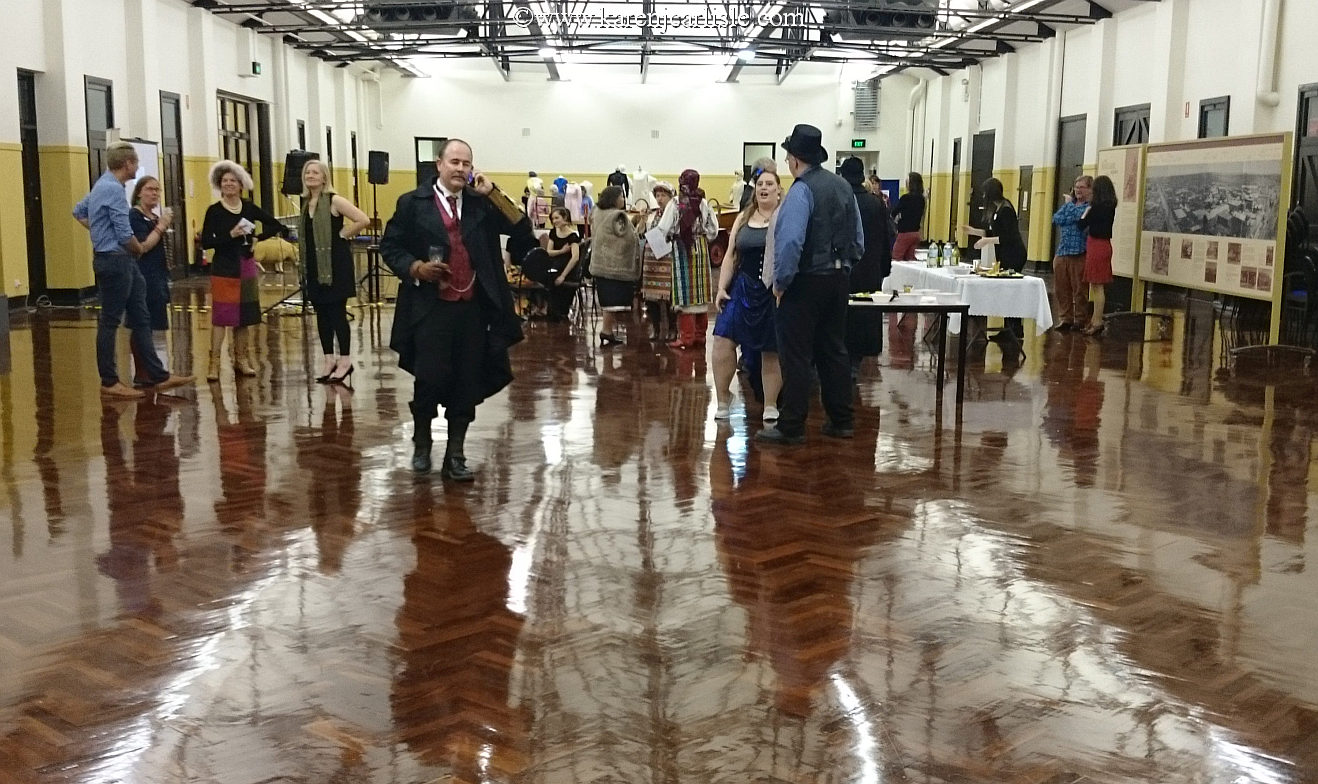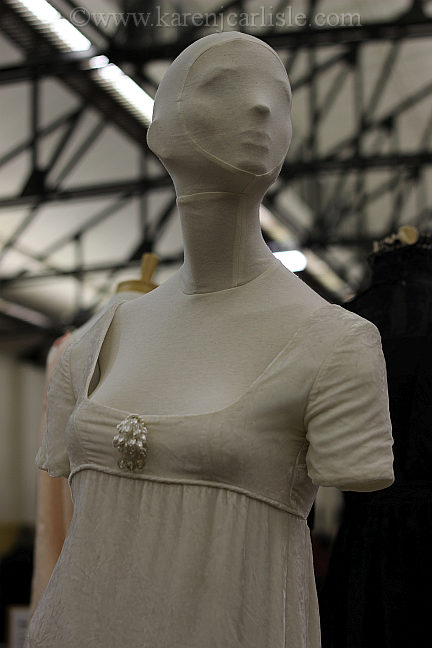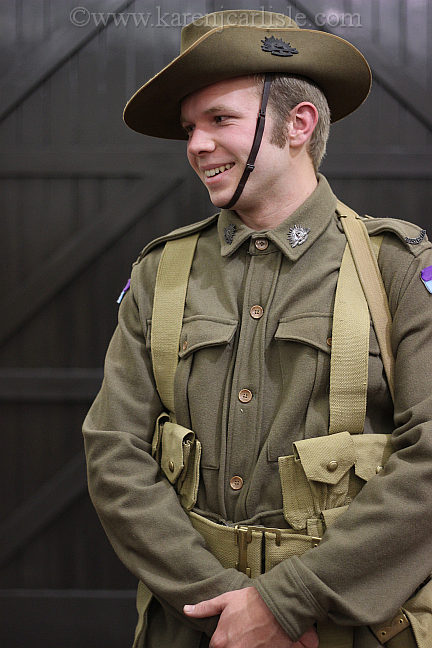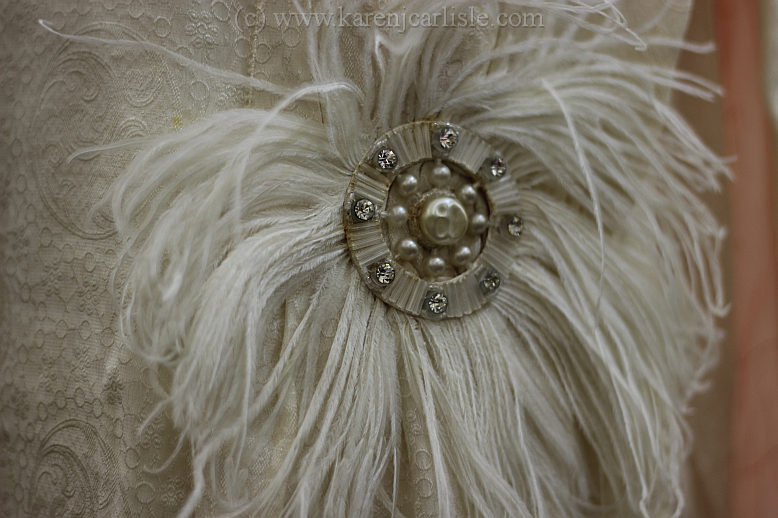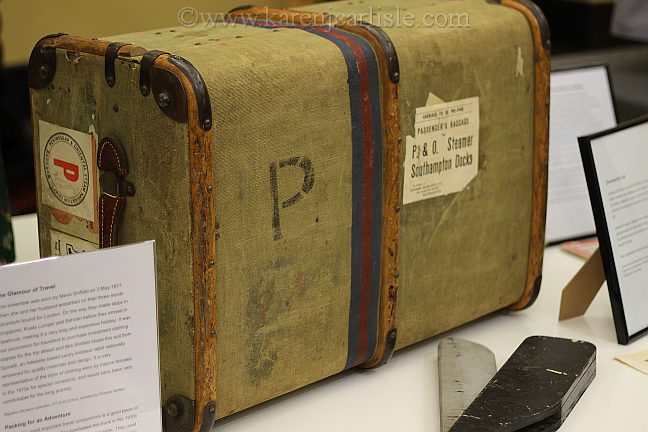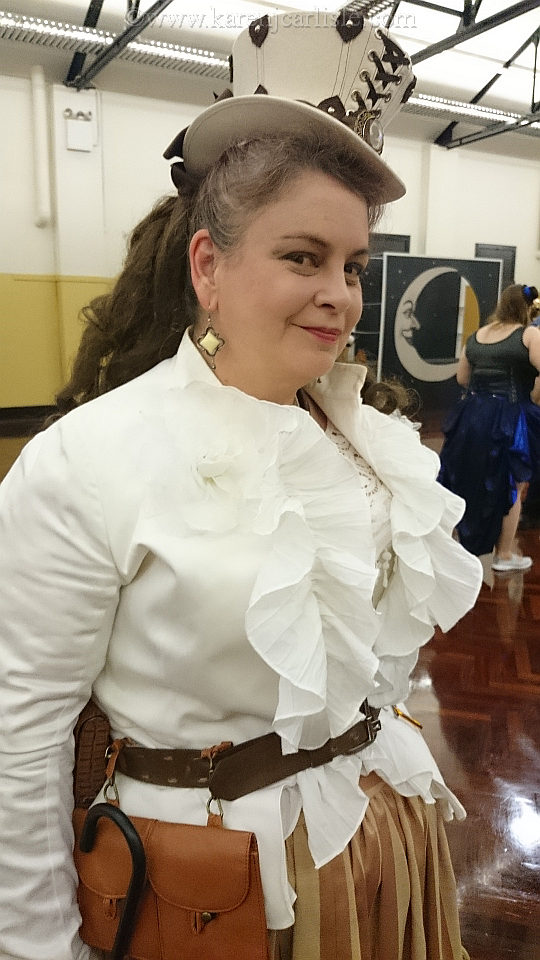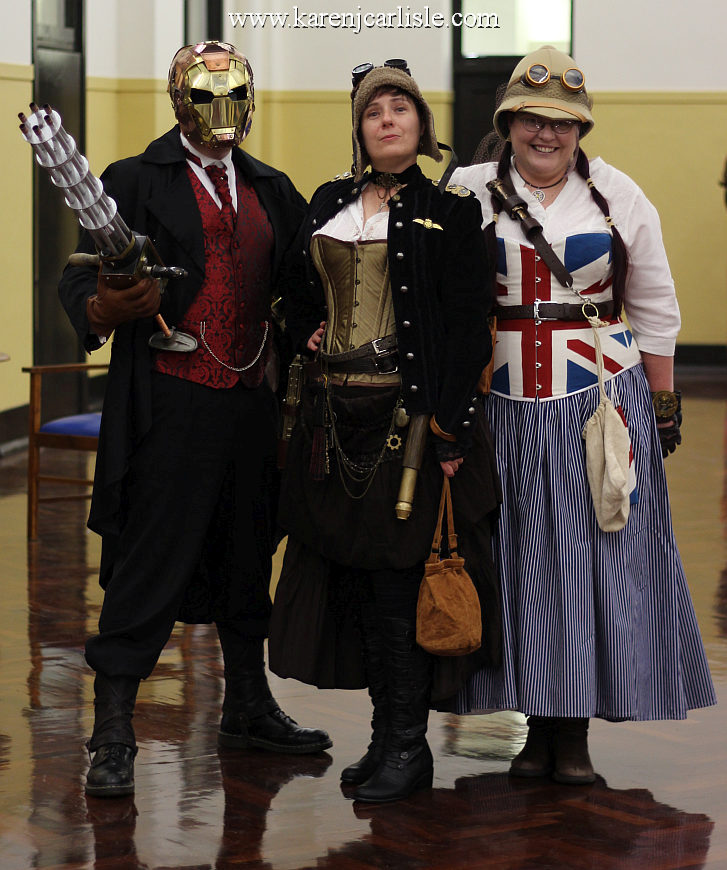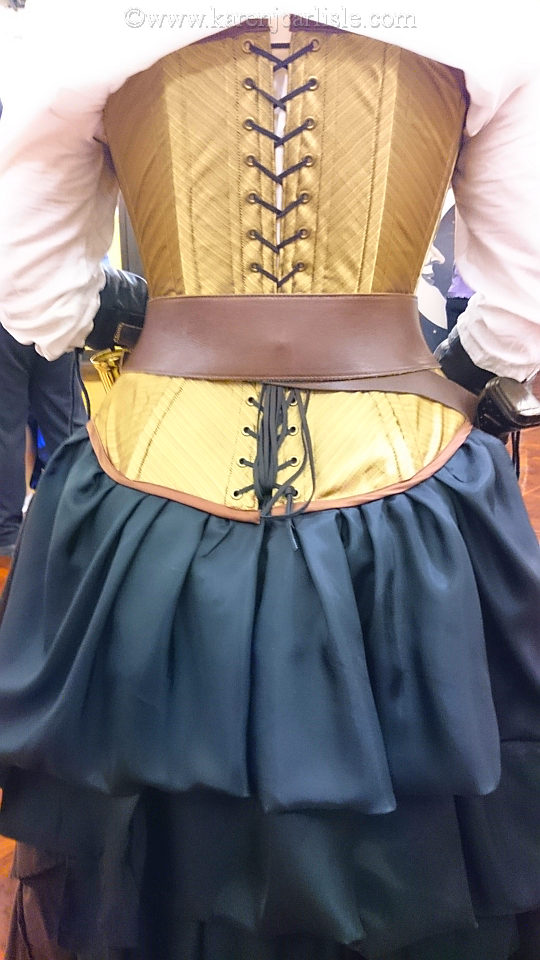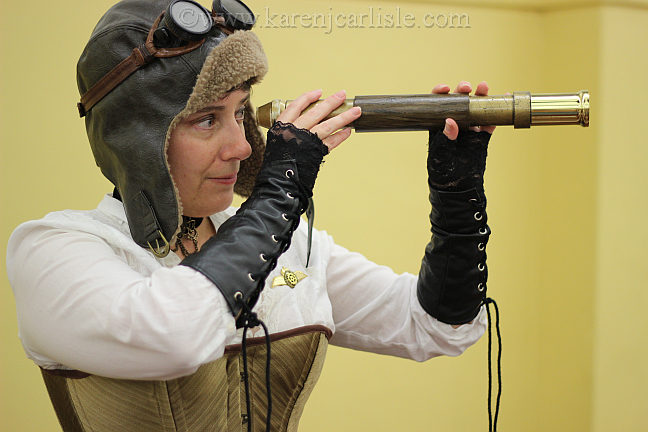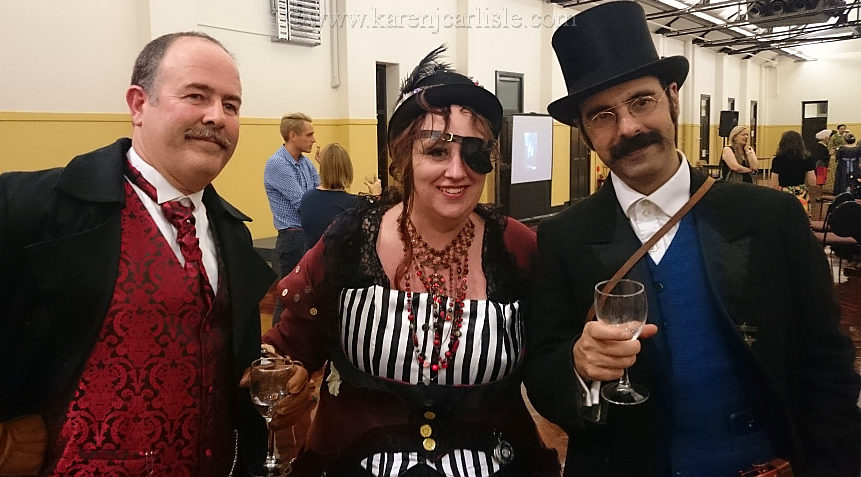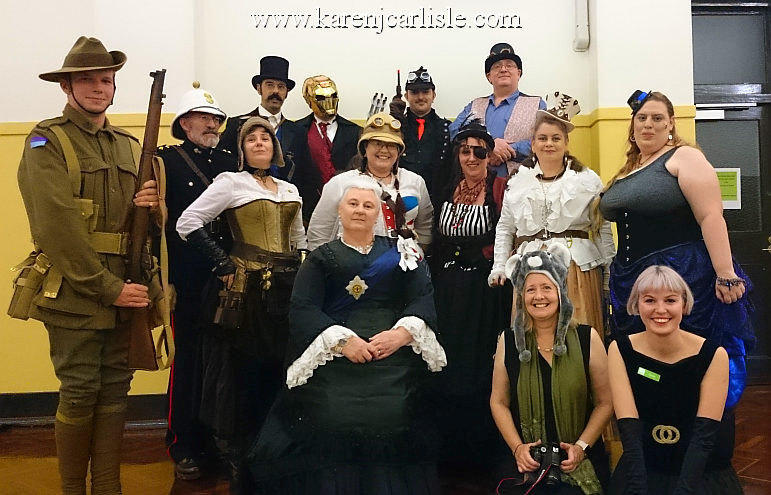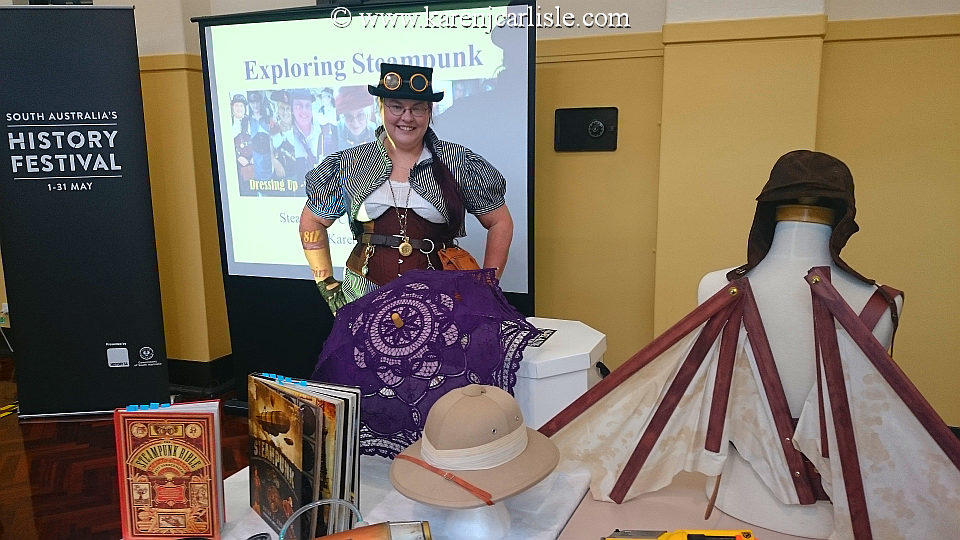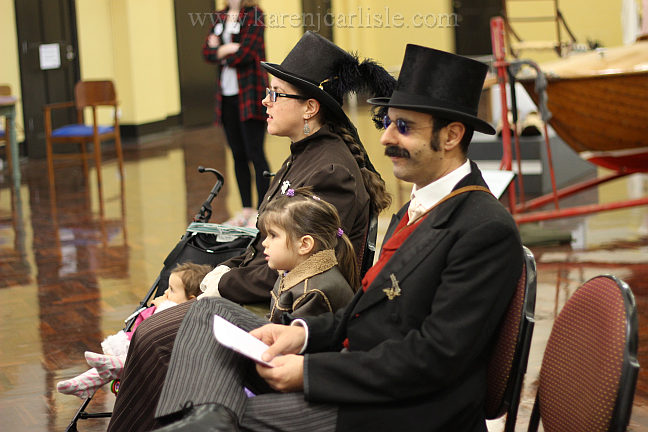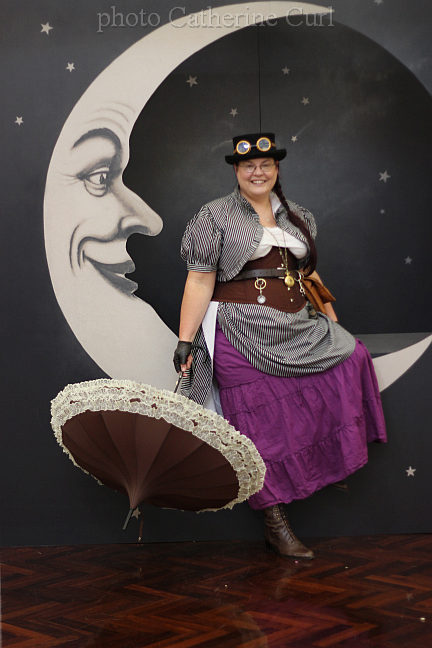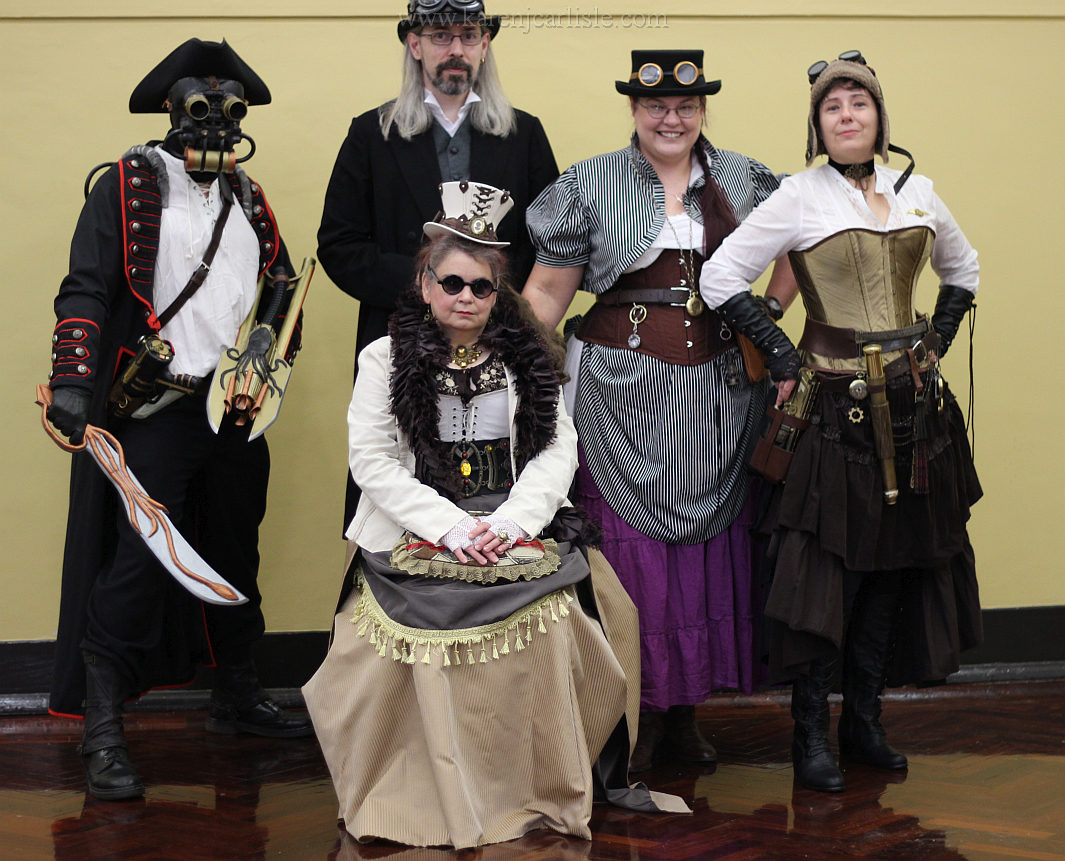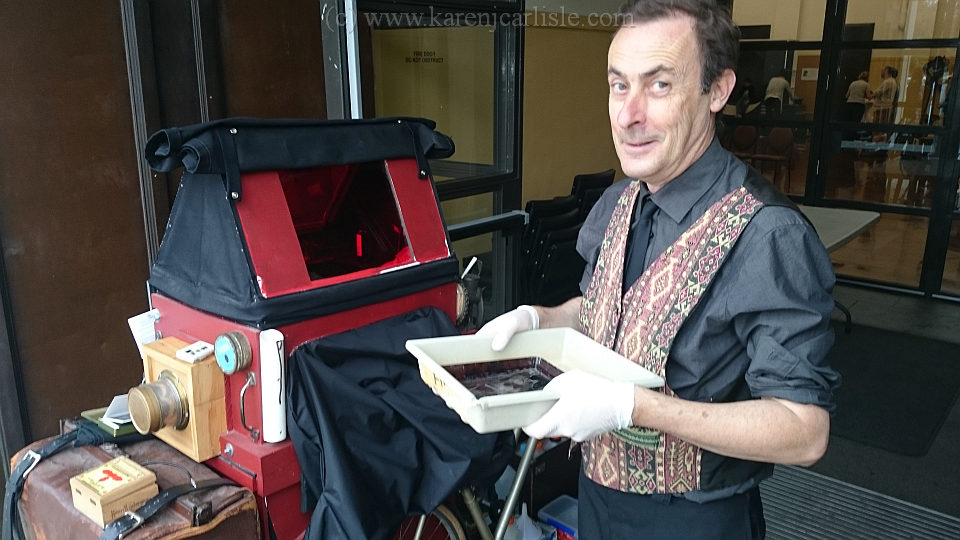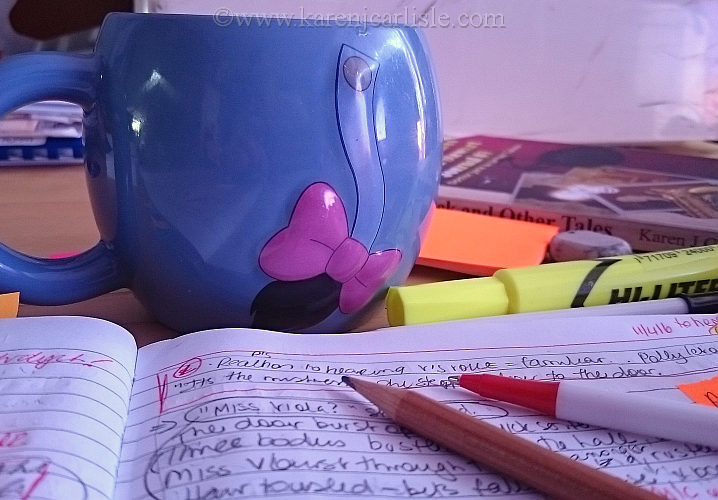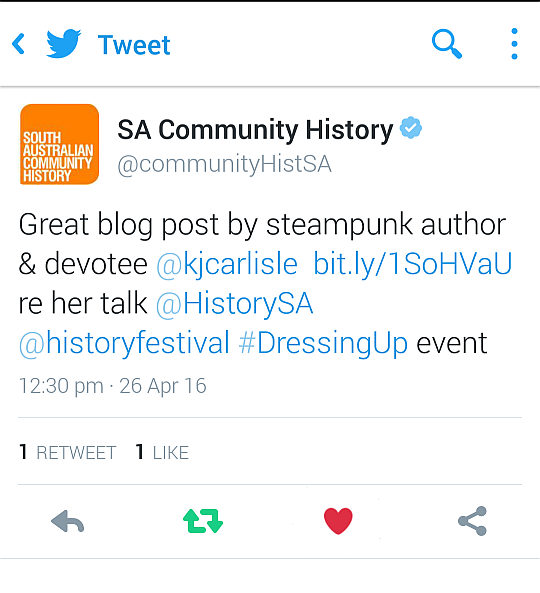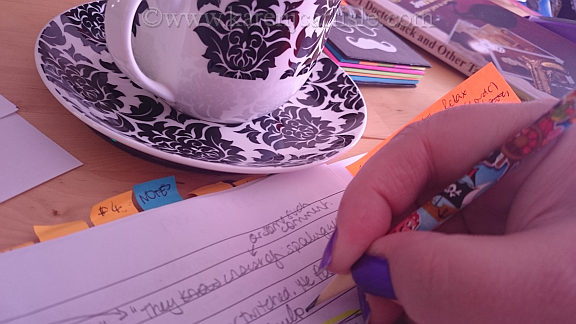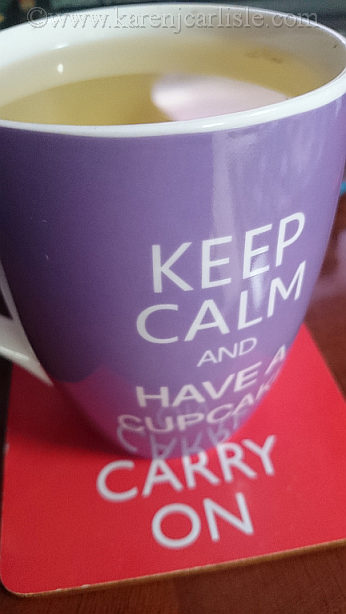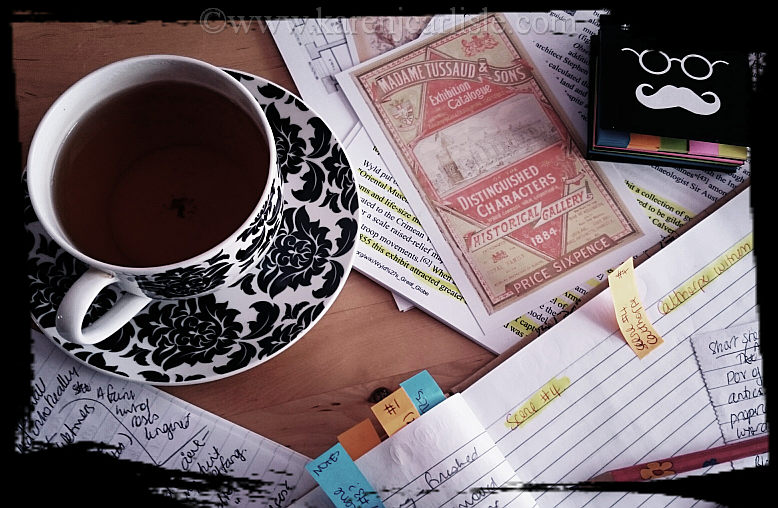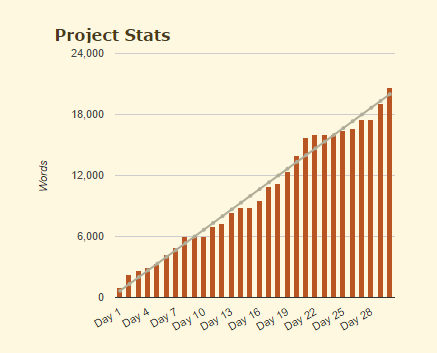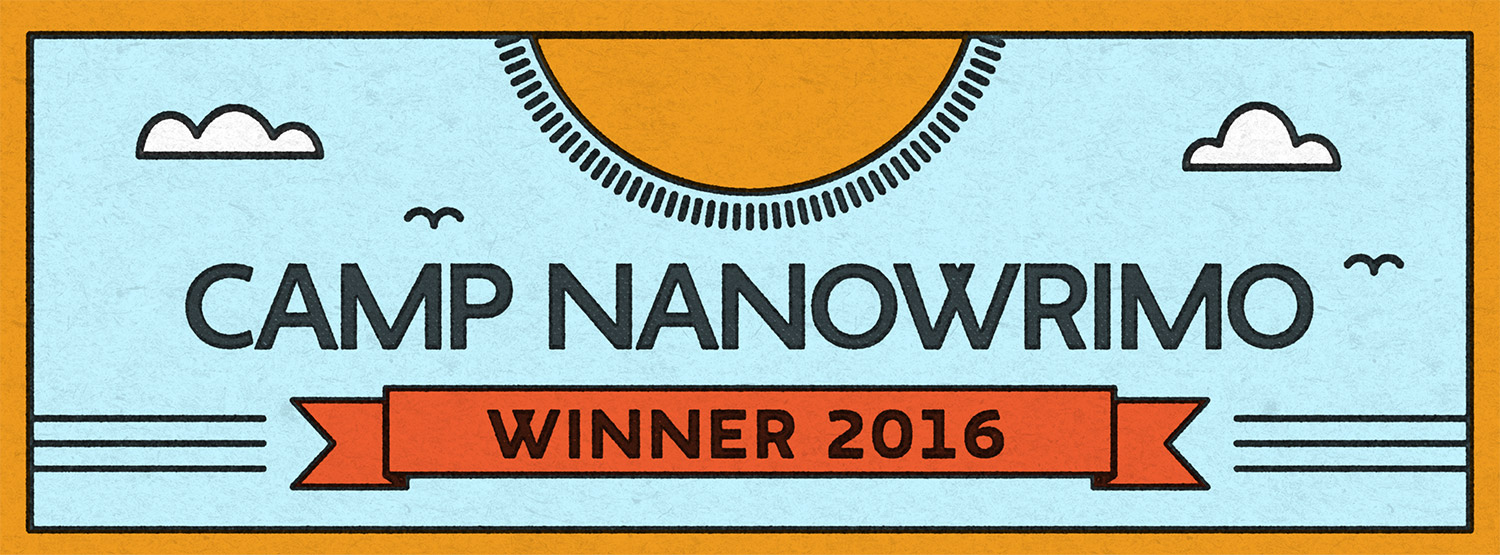original blog post: http://karenjcarlisle.com/2016/05/20/fiction-friday-short-story-challenge-they-fight-crime/
It's Flash Friday. Well technically this is a short story of up to 1500 words. So a bit more than just a flash really. Chuck Wendig's latest challenge, They Fight Crime, was entertaining from the start. Go to They Fight Crime website. Grab a random pairing of characters and write - but they must fight crime. Here is where the procrastination set in. I grabbed mine but kept looking -so many entertaining pairings.
My random pair up was:
He's a sleep-deprived scientist from a land time forgot.
She's time-travelling astronaut from the wrong side of the tracks.
Together, they fight crime!
Here's my offering:
Derailed.
© 2016 Karen J Carlisle
The sign clattered against the railyard fence as Adelaide City shuddered along the track.
KEEP OUT.
Registered Citizens Only
Beyond This Point.
Connor glared at the city-train as the suburbs thundered along the track, each carriage emblazoned with the area represented by its surviving citizens.
He yawned. There was another ten kilometres before Adelaide City passed. He pulled the thermal blanket up around his ears, pressed his body further into the cluttered corner of the station house and closed his eyes.
A loud boom shuddered the brick walls. Glass smashed on the platform, resurrecting the stench of yesterday’s rubbish dump.
Tomorrow he would look for new digs. Somewhere with less noise. Now he needed sleep. His dad used to count the carriages to fall asleep. Like counting sheep, he said. Connor cracked open one eye and (eyed the loco) through a shattered window caked in three-day old iced-coffee.
Tea Tree Gully, Collinswood, Walkerville.
The rhythmic thunk skipped a beat. Another shudder.
Connor opened his other eye. The suburbs were slowing. Wheels screamed on the metal tracks.
He was on his feet now. He folded up his blanket and shoved it in his backpack. The Cities never stopped until they reached the depot – and then only for refuelling and restocking.
The carriages wobbled and halted on the tracks.
Connor crept towards the station house door.
Muffled sounds of panic rolled along the innards of the Adelaide Central carriage. Vague shadows scuttled along the carriages, plastered themselves against the translucent windows, and recoiled away from the perspex.
Then silence. No movement.
Connor slipped off the platform, picked his way through layers of refuse and squeezed through a ragged hole in the wire fence. He edged closer to the train. The stench of rotting rubbish and manufactured food waste was stronger on the Tracks. He gagged, pulled his sleeve over his hand and covered his nostrils.
The central driver’s cabin was only a few hundred metres up the track. If he could convince the Caretaker, he belonged on the train…
Footsteps crunched on the other side of the track. Connor peered under the carriage. A pair of trousered feet, wrapped in well-worn silvered boots, stepped into view. Loose leather straps dangled over the double lacing.
He ducked behind a wheel. The Eastern Tracks weren’t a safe place to be. Scavengers raided the dumped rubbish pods – usually after each city had passed. It seemed one of them was curious.
The crunching stopped.
Connor held his breath.
Clank.
He dared not peek.
Clank. Clank. Clank. Click.
A flurry of cloth crashed onto the gravel next to Connor. He flung his arms in front of his face and cringed.
“What do you want, Scav?” it demanded.
“I’m a Logic, not a Scav,” cried Connor, bracing himself for the inevitable blow.
“A Logic?” The intruder squinted at him through a slit in her face wrappings. Dark eyes scanned his face, his hands, his backpack. Lines formed at the edge of the eyelids. The intruder lifted her balaclava. Her black hair clung to the synthetic, and crackled as she removed her mask.
“You’ll never board the train wearing that.” She chuckled and ripped the Hawking Rocks! patch from Connor’s backpack. “I met him once, you know - before The Blast.”
She trudged along the carriage toward the driver’s cabin. “Come on. I need your help if we’re to investigate.
“You’re a scientist?”
“Was. An astronaut.”
She threw her hands up in the air. “And look where that got me! Crawling back from the wrong side of the tracks, looking for anyone who hasn’t fried their brain cells.”
“Why the Tracks?”
“I could ask you the same thing. It’s like moths to a flame isn’t it? A trained Logic faced with a puzzle – why did Adelaide stop? It’s what they bred us for – our inquisitive nature.”
“It’s what they banished us for,” grumbled Connor.
She turned, her smile gone, and thrust her outstretched hand at Connor. “My name’s Lee, Captain Erin Lee. You can call me Lee.”
“Professor Michael Connor.” He shook her hand.
“Come on, Connor. Keep up.” She turned and strode up to the driver’s cabin, wedged between the Central and Unley carriages. “Keep up.”
“But, Lee, we’re forbidden to board any City, by law. If we get caught --.”
###
The cabin door hissed. Connor jumped into the engine after Captain Lee/Erin, as it clicked behind them. Lee grinned and handed back his tools.
A mangled mess of metal and wire sat in the pilot’s seat. Dark liquid dripped from its joints and reeked of machine oil. Soot covered the walls and roof. A lanky figure cowered in the corner; the braid on his uniform jiggled as he twitched. He peeked through his fingers and whimpered.
“Please, don’t eat me! I’m just the Caretaker.”
“Why would I want to eat you?” asked Connor.
“Everyone knows what happens to citizens who leave the city. The Tracks are full of flesh-eating Scavs.”
“Sca--?” Connor scowled. “I’m not a Scav.”
“You dress like one,” replied Caretaker.
Connor regarded their reflection in the cabin window. Mud-stained jeans, faded shirt, tatty jacket caught up in the strap of his backpack. Lee didn’t fare any better - a shredded long coat and dusty jumpsuit. He dropped his backpack onto the metal floor.
“I’m a scientist, and I don’t eat people.”
Caretaker’s eyes widened.
“What about her?”
Lee sat on the floor, examining a handful of circuit boards she’d pulled from an open panel beneath the console.
“She’s an astronaut. She doesn’t eat people either,” replied Connor.
“The electronics seem intact.” Lee jumped to her feet and dusted off her pants. “What happened to the autopilot?” she asked.
“I don’t know.” Caretaker sniffed and adjusted his jacket collar. “The city just stopped. We’re nowhere near Depot. Head Mechanic said the engine’s been sabotaged and the next city is only twelve hours behind us. I followed procedure and checked the driver’s cabin.” Caretaker pointed to the damaged automaton. “And I found the autopilot like this.” He slumped back against the wall and shook his head. “I’m not trained to fix things.”
“Another puzzle for you, Lee,” said Connor.
Lee grinned, snatched a screwdriver from Connor’s backpack and examined the lock of the carriage door.
“One for their Enforcer,” she said. “I’m where I wanted to be - on a city-train. Now I just need to get through this door.” She eyed Caretaker. “My training tells me you’ll have a key.”
Caretaker raised an eyebrow.
“You’re both trained Logics?” he asked.
Connor nodded slowly. “Are you going to banish us back to the Tracks?”
Caretaker shook his head.
“Our Law Enforcer is dead.”
“That explains why no one stopped us,” said Connor.
“An overworked Mechanic, no Autopilot, no Enforcer. You’re not doing a good job of caretaking, are you?” said Lee.
Caretaker’s eyelids narrowed.
“My job is to ensure the safety of the City. You need sanctuary. I need an Enforcer.” He glanced at the autopilot. “And possibly a temporary pilot. I’m sure a Logic could assume either, or both, roles.” Caretaker dipped his fingers into his vest pocket and pulled out a long silver chain. An electronic key dangled at the end. “Find out who sabotaged the autopilot, get the city moving again and you can access the key to the city.”“
Connor’s eyes followed the swinging key. They would need a job if they remained onboard. He retrieved his backpack and stepped up to the city door.
Lee nodded.
“Enforcers Lee and Connor reporting for duty,” she said. ”I assume you can provide us with necessary documents?”
“We’ll stop by Provisions before I let you loose in the suburbs.”
Caretaker nodded and swiped the card through the lock.
Connor noticed Caretaker’s hand. There were fine cuts on the palm. One fingertip had electrical burns and there were traces of soot under the fingernails.
“Shut the door behind you,” said Caretaker as he scuttled down the corridor.
Connor tugged on Lee’s coat.
His hand, he mouthed.
Lee nodded.
“You finally noticed,” she whispered. “Did you notice the traces of oil on his trousers?”
Connor shook his head. Missed that one.
“He must have wiped his hands after he sabotaged the autopilot. Also, he’s not the Caretaker.”
Connor froze.
“How do you know?” he asked.
“Because I’ve seen the City records. The real Caretaker was thrown off the train five suburbs ago,” replied Lee.
The door clicked shut. Connor stared at her.
“Those experiments you were working on before The Blast…”
Conner’s heart skipped. He hadn’t mentioned what he had been working on.
“They worked.” She winked at him and lifted up her sleeve. An oversized watch with red LEDs blinked at them. Numbers counted down:
11:00:28
11:00:27
11:00:26
“We’ve got eleven hours to obtain documents, defuse the second bomb and nail this imposter.”
Captain Lee strode down the corridor.
“Do keep up, Enforcer Connor.”
THE END
(Background: Australia boasts some of the record for the longest trains in the world (see youtube video to get an idea of the time taken for one to pass). This is only a fraction of the city-trains in this world.)

